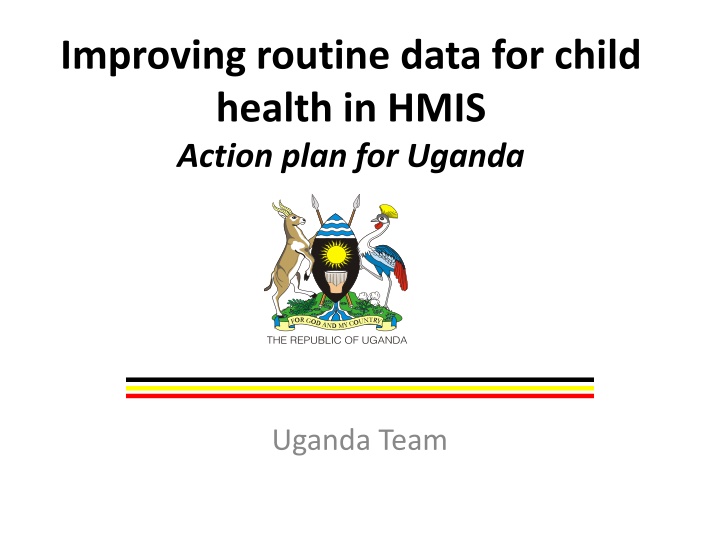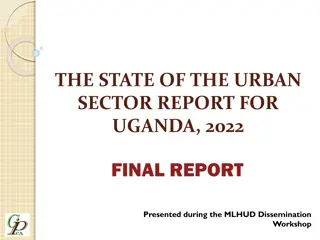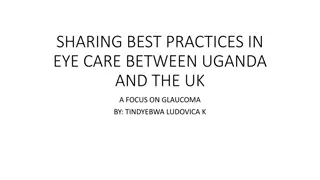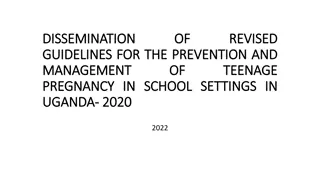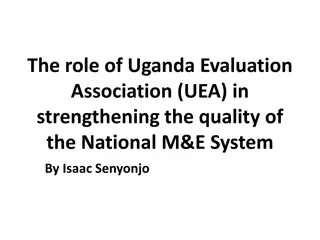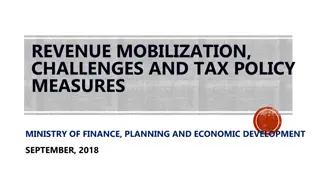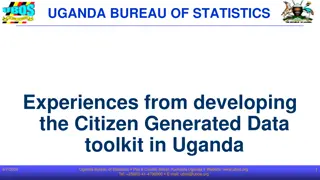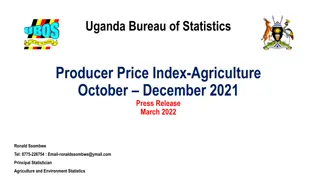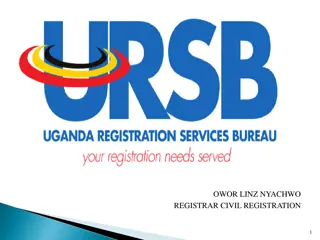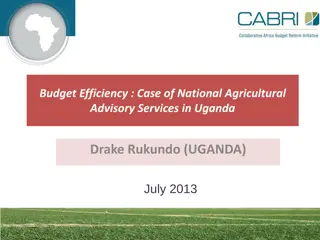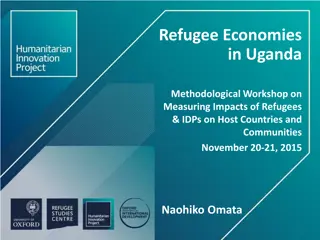Improving Routine Data for Child Health in Uganda: Action Plan and Trends
Enhancing child health data in Uganda through improved routine reporting and digital information systems is crucial for tracking progress and improving outcomes. Utilizing mobile technology for real-time reporting, harmonizing indicators, and engaging the private sector are key strategies identified. Learning from country experiences, including Nigeria's adoption of quality care standards for health insurance access, provides valuable insights for sustainable quality improvement in child health.
Download Presentation

Please find below an Image/Link to download the presentation.
The content on the website is provided AS IS for your information and personal use only. It may not be sold, licensed, or shared on other websites without obtaining consent from the author.If you encounter any issues during the download, it is possible that the publisher has removed the file from their server.
You are allowed to download the files provided on this website for personal or commercial use, subject to the condition that they are used lawfully. All files are the property of their respective owners.
The content on the website is provided AS IS for your information and personal use only. It may not be sold, licensed, or shared on other websites without obtaining consent from the author.
E N D
Presentation Transcript
Improving routine data for child health in HMIS Action plan for Uganda Uganda Team
Map of Uganda Total population 34.6m (2014) Children data 0-4yrs-17.7% 5-9yrs-16% 10-14yrs-14.2% 15-19yrs-11.4% <18yrs 55% Literacy rate -72.2% Fertility rate (15-19yrs) 25%
Uganda: At the Beginning of the Demographic Transition
Trends in Child Mortality Under 5 mortality ratio. Target 25 Infant mortality ratio Neonatal mortality ratio Target by 2030: 10 8/21/2024 FOOTER GOES HERE 5
Nutrition Trends Targets SDG 2030 Stunting <20% Wasting<5% 8/21/2024 7
Child Health Data Use: What have we learned?
Country experiences What have we learnt? Digital health information systems are critical for improving quality and timeliness in reporting especially at community level Mobile technology to support CHWs and HWs to screen clients, diagnose and report real time are available as open source and have interoperability with DHIS II e.g. medic mobile, open SRP, IeDA All systems linked to the national health observatory system critical for MoH to track and monitor progress Indicator mapping in relation to National and Global indicators is critical. E.g Child survival strategy, Sharpened plan, ENAP, EWEC, SUN Harmonization of indicators is critical for tracking progress in child health Engagement of the private sector in reporting and using child health data is important to improving child health outcomes Nigeria adopted use of quality of care standards within the accreditation guidelines to access health insurance schemes.
Country experiences What have we learnt? Data use of quality improvement at all levels of the health sector from national to community level important to sustain improvement in quality, timeliness and outcomes Use of RMNCAH scorecard for administrative or political leadership very good for their response Infusing simple data use tools within existing structures useful to support planning and drive improvement towards results. Capacity building at all levels of planning including national, district, HSDs and community levels National strategy that addresses how partners engage in contributing to a comprehensive M&E platform (one country HMIS system) is critical to aligning partners. In addition, establishing a country data collaborative with TA from global collaborative (WHO secretariat) has been beneficial to bring all stakeholders together to arrive at one platform.
Data Use: What Next? Share with MoH and key stakeholders what we learned from the conference-MCSP Share community related lessons at the iCCM task force meeting- Living Goods Facilitate indicator mapping against required national and global reporting- MCSP Explore need for country data collaborative
